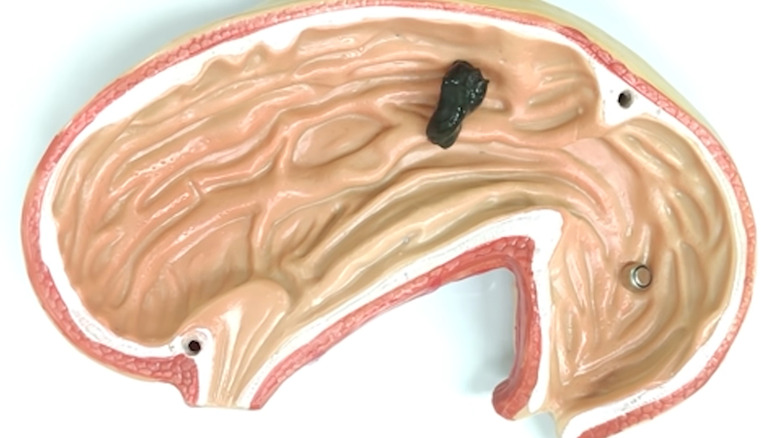This Slime Robot May Transform Surgeries Forever
Slime and robots don't immediately come to mind as a natural pairing, but alas, the scientists are back at it once again. CNET reports that a new surgeon is on the block, and it's a bit "slimier" than the one at the clinic. The experimental Reconfigurable Magnetic Slime Robot, which is still undergoing testing at the Department of Mechanical and Automation Engineering at the Chinese University of Hong Kong, is capable of slithering its way into the difficult-to-reach cracks and crevices of the human body and swallowing objects along the way.
In theory, this could replace certain kinds of surgeries, specifically any variety of surgery that might be used to remove objects from a patient's body. For example, it could replace the need for certain laparoscopies, though it sounds like its most immediate use case is to help clear patients' airways quicker.
Made of a non-Newtonian fluid consisting of borax and a few other ingredients, the Slime Robot can either become hard when touched rapidly, or it can soften when touched slowly. Beyond that, the innovation is remarkably durable. Its versatility gives it the ability to "self-heal," as well, and it can even be chopped apart and put back together. Strangely enough, the unusual robot can also conduct electricity, meaning it can also serve as a quick repair for busted circuitry, in theory. By comparison, other magnetic fluid-based robots can't do quite as many feats, which is what sets the Reconfigurable Magnetic Slime Robot apart.
How the Reconfigurable Magnetic Slime Robot works
Not only does the 1.5-millimeter Slime Robot have the ability to reconfigure itself once broken apart, but it is also able to act like a solid, unlike other magnetic fluid that is usually made of iron oxide nanoparticles or a similar magnetic metal. According to the engineering team's research paper, released on March 25, this Reconfigurable Magnetic Slime Robot is made of non-Newtonian materials, making it capable of "grasping solid objects, swallowing and transporting harmful things, human motion monitoring, and circuit switching and repair."
The #slimerobot developed by @CUHKengineering can deform, grab objects and move, just like the sci-fi movie creatures. It is expected to be of great value in #medicalapplications, such as removing accidentally swallowed objects. Research findings: https://t.co/Y3XfyOmO2C pic.twitter.com/XxXQE7YqLQ
— The Chinese University of Hong Kong – CUHK (@CUHKofficial) April 11, 2022
The main issue with magnetic fluid is that it can't be remotely controlled, and it doesn't have any cameras attached to it (though a small camera could technically be inserted into the slimy mass), which means that doctors would need to move it through a patient's tracts by manipulating magnetic fields to which the particles inside of the slime are attracted. Another challenge that comes with the territory of pushing magnetic slime through a person's stomach tract, for example, is that magnetic particles inside of the slime can be incredibly toxic, which was also addressed in TechXplore's report on the same robot. However, a silica coating in the slime itself can theoretically be made to act as a buffer between the magnetic particles and the human body.
Currently, the Slime Robot is still in the R&D phase. However, in the near future, it could become one of many high-tech tools that doctors use in order to simplify otherwise difficult surgical procedures.

